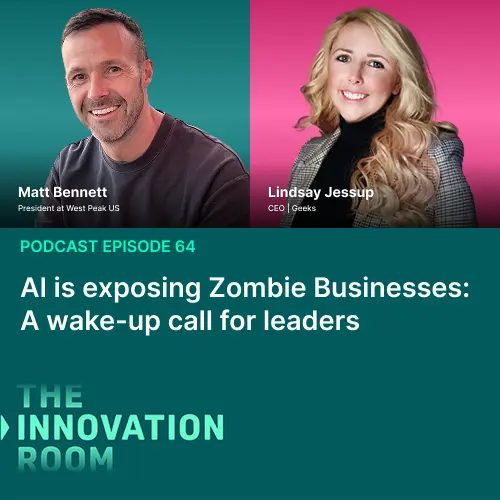
Inside the Agentic AI loop: Core functions, roles and business value
In 2025, agentic AI is no longer a theoretical advance, it is reshaping how digital work is designed and executed. Unlike static automation or traditional AI that reacts within fixed parameters, agentic systems operate with reasoning, memory, autonomy, and monitoring loops. They are built to adapt in real time, learn from context, and coordinate multi-step processes. This makes them not just faster, but fundamentally more resilient in dynamic business environments.
The scale of change is significant. The global autonomous agents market is valued at US$4.35 billion in 2025, projected to exceed US$100 billion by 2034 at a CAGR above 42%. Nearly 80% of organisations already deploy AI agents, with 96% planning to expand this year. By 2028, these systems are expected to resolve 68% of customer interactions with minimal human oversight (Cisco). For enterprises, this marks a shift from automating tasks to orchestrating intelligence for measurable growth and competitive advantage.
What is the agentic AI loop?
An agentic AI loop is the operating cycle that enables agentic AI systems to move beyond static automation and traditional AI. Instead of reacting only to fixed inputs, the loop integrates reasoning, autonomy, memory, action, and monitoring into a continuous cycle. This allows the system to perceive changing conditions, make autonomous decisions, execute tasks, and adapt based on feedback. The loop functions as a self-improving cycle, learning from every interaction and refining its performance over time.
The difference from traditional AI lies in AI orchestration and adaptive intelligence. Conventional models provide predictions or outputs but require external direction. In contrast, agentic AI loops coordinate multiple steps without constant human input, using memory and monitoring to stay aligned with business goals. This creates systems that do not just respond but proactively drive business outcomes, blending automation with autonomous decision-making and continuous learning. For organisations exploring how to embed these capabilities effectively, expert AI Consultation can provide the strategic guidance needed to design, scale, and govern agentic AI frameworks that deliver measurable value.
What is the primary function of the reasoning part of an agentic AI loop?
Reasoning is the thinking core of an agentic AI loop. It enables the system to interpret data, evaluate multiple options, and decide which actions are most effective in a given context. Unlike traditional AI models that deliver static predictions, reasoning modules apply structured logic to weigh trade-offs, anticipate outcomes, and adapt strategies in real time. This capability allows agentic AI to go beyond task execution and operate as a problem-solving system that can navigate uncertainty and complexity.
The primary function of reasoning is to translate perception and data inputs into goal-directed actions. By combining contextual awareness with decision-making frameworks, the reasoning component ensures that every choice aligns with broader business objectives. This creates a system that is not only efficient but also resilient, capable of learning from outcomes and improving its decision quality over time. In enterprise settings, this reasoning capability is what turns agentic AI into a driver of autonomous decision-making, adaptive intelligence, and measurable business value.
What does autonomy mean when managing an Agentic AI system?
Autonomy is the defining shift that separates agentic AI systems from traditional automation. It is not about removing humans from the loop, but about enabling systems to act independently while staying aligned with business objectives. Autonomy gives agents the capacity to interpret context, make decisions, and take action without waiting for constant human approval.
In an enterprise setting, this has three critical implications:
-
Reduced oversight: Teams are freed from micromanaging repetitive tasks, allowing them to focus on strategy, innovation, and customer value.
-
Goal alignment: Autonomous systems do not act randomly. They are calibrated against organisational objectives, KPIs, and compliance rules.
-
Scalable intelligence: With autonomy built in, AI loops can operate across multiple functions simultaneously, adapting to new inputs without breaking the system.
When managed effectively, autonomy turns agentic AI from a tool into a strategic partner. It creates systems that are resilient under pressure, capable of handling complexity at scale, and flexible enough to adapt when priorities shift. For leaders, the challenge is no longer about controlling every step, but about designing the right guardrails so that autonomy drives measurable business outcomes.
Which type of agent is responsible for executing specific tasks within an Agentic AI framework?
Agentic AI frameworks are rarely built around a single agent. Instead, they are structured as ecosystems where different types of agents play distinct roles. Understanding these roles is essential to see how intelligence and execution come together in the loop.
Broadly, there are three categories of agents within an agentic AI system:
-
Reasoning or orchestrator agents: These operate as the coordinators. They interpret goals, break them into subtasks, and assign responsibilities to the right agents.
-
Worker or task agents: These are the executors. They focus on carrying out specific, well-defined tasks such as drafting a report, processing a dataset, or triggering an automated workflow.
-
Monitoring agents: These track progress, measure outcomes, and ensure that the system stays aligned with business objectives and compliance requirements.
The agents directly responsible for executing tasks are the Worker or Task Agents. They take the instructions generated by the reasoning or orchestrator agents and perform them at speed and scale. Their strength lies in precision and reliability, they do not need to decide what should be done, only how it should be executed within the given context.
When integrated into the broader loop, task agents provide the action layer of the system. They translate reasoning and autonomy into tangible outputs, while memory and monitoring ensure those outputs are refined and measured. Without them, agentic AI would remain a planning exercise. With them, it becomes an operational engine that delivers measurable business results.
What is the role of memory in an agentic AI system?
Memory is what gives agentic AI systems continuity. Without it, every cycle of reasoning and action would start from zero, forcing the system to relearn context each time. With memory embedded into the loop, the system can carry forward knowledge, adapt to changing conditions, and build efficiency over time.
There are two main dimensions of memory at work:
-
Short-term memory: Holds immediate context from the current task or interaction. For example, remembering the steps already taken in a workflow, or retaining user inputs during a multi-step process. This ensures accuracy and coherence in real time.
-
Long-term memory: Stores accumulated experiences, historical data, and lessons from past outcomes. It allows the system to refine its strategies, recognise patterns, and improve decision quality across future tasks.
Together, short-term and long-term memory turn agentic AI into a learning system rather than a static tool. They enable AI to adapt continuously, minimise repeated errors, and increase efficiency with every cycle. For businesses, this means processes that get sharper over time, systems that become more resilient under new conditions, and intelligence that compounds into measurable competitive advantage.
What is the primary purpose of business monitoring in Agentic AI systems?
Business monitoring is the governance layer of an agentic AI system. While reasoning, autonomy, and task execution ensure the system runs, monitoring ensures it runs in the right direction. It links technical processes back to business priorities by tracking performance, measuring outcomes, and flagging risks in real time.
The primary purpose of monitoring is threefold:
-
ROI measurement: Monitoring captures the impact of agentic AI on productivity, efficiency, and cost reduction, providing leaders with data to assess return on investment.
-
Compliance and risk management: It ensures that autonomous decisions stay within regulatory boundaries and internal policies, reducing the risk of compliance failures.
-
Resilience and trust: By continuously observing the loop, monitoring creates transparency, builds trust in AI-driven outcomes, and ensures systems can adapt when conditions shift.
In practice, business monitoring turns agentic AI from a black box into a transparent, accountable system. It closes the loop by ensuring that intelligence and autonomy translate into measurable business value while keeping organisations resilient against risk.
How the agentic loop comes together
The strength of an agentic AI system lies not in its individual components, but in how they are orchestrated into a seamless loop. Reasoning provides the intelligence to interpret goals, autonomy allows the system to act without constant direction, task execution delivers tangible outputs, memory ensures continuity, and monitoring safeguards alignment with business priorities.
When these elements work together, the result is a self-sustaining cycle of perception, decision-making, action, and evaluation. Each loop reinforces the next, creating systems that adapt faster, learn continuously, and scale across business functions. This orchestration is what elevates agentic AI from isolated automation to a coordinated intelligence framework, one capable of driving measurable outcomes and reshaping how enterprises operate in real time.
Designing agentic AI for enterprise success
Building an agentic AI system is not just a technical exercise, it is a strategic design challenge. Enterprises that succeed start with clarity on business objectives and then shape the AI loop to deliver against those goals. This means defining where reasoning and autonomy will create the most value, how execution can integrate with existing workflows, and what metrics monitoring should track to prove ROI.
At Geeks, we help organisations design agentic AI systems that move beyond pilots and deliver enterprise-wide transformation. Our approach is grounded in clear business alignment, governance frameworks, and scalable orchestration. We work with leaders to identify high-impact use cases, embed memory as a strategic asset, and build monitoring capabilities that ensure resilience and compliance. If you are ready to explore how agentic AI can drive measurable value in your business, get in touch with us here.
The evolution of agentic AI
Over the next decade, agentic AI will move from experimental deployments to becoming a core layer of enterprise infrastructure. As reasoning, autonomy, memory, and monitoring loops mature, organisations will no longer view AI as a support tool but as a strategic partner capable of running complex processes end to end. Industries such as finance, healthcare, logistics, and education are already piloting agentic AI to cut costs, improve resilience, and unlock new growth opportunities.
The next 5–10 years will see three defining shifts. First, wider adoption at scale, with agentic loops embedded into business-critical systems rather than isolated projects. Second, greater regulation and governance, ensuring that autonomy operates within transparent and accountable frameworks. Third, integration with human collaboration, where employees and agentic systems co-create value by combining human judgment with machine-driven adaptability. For leaders, the challenge will be to harness this evolution early, so they can shape its trajectory rather than react to it. Those who succeed will position agentic AI not just as a technology, but as a competitive edge for the future.
FAQs
How can agentic AI improve enterprise automation strategies?
Agentic AI enhances enterprise automation by adding reasoning, memory, and adaptive intelligence. Unlike rule-based workflows, it can adjust to real-time conditions, scale across departments, and continuously optimise performance for measurable ROI.
What industries benefit most from agentic AI adoption?
Industries such as financial services, healthcare, supply chain management, and education are leading adopters of agentic AI. These sectors value autonomous decision-making and AI orchestration to reduce costs, improve resilience, and accelerate innovation.
How does agentic AI support human-AI collaboration?
Agentic AI systems are designed to augment, not replace, human expertise. By handling repetitive tasks and monitoring outcomes, they enable employees to focus on strategy and creativity. This human-AI collaboration drives higher productivity and innovation.
What challenges do organisations face when scaling agentic AI frameworks?
Enterprises often struggle with data integration, governance, and compliance when scaling agentic AI. Ensuring transparency in decision-making and building trust in autonomous systems are key to successful adoption.
How should leaders prepare for the future of agentic AI in business?
Leaders should treat agentic AI as part of a long-term digital transformation strategy. That means identifying high-value use cases, investing in monitoring and governance, and ensuring AI orchestration is aligned with business KPIs and customer expectations.










